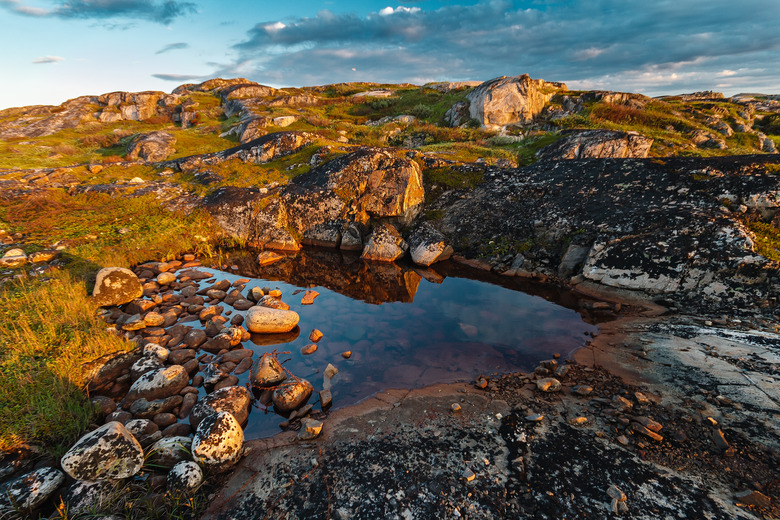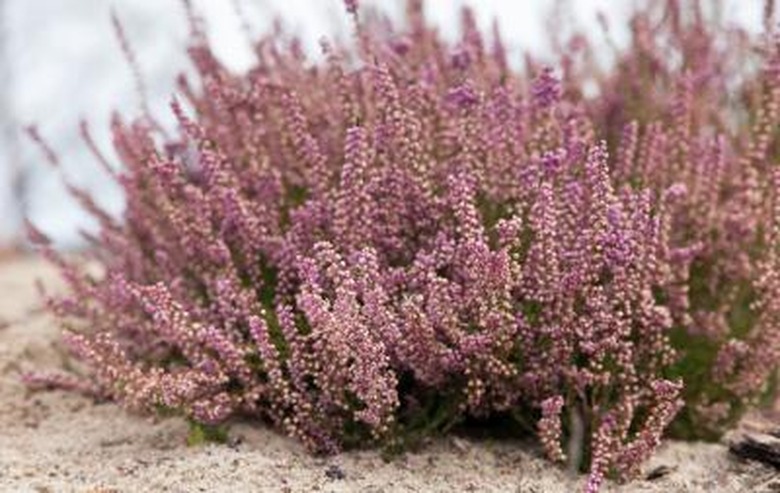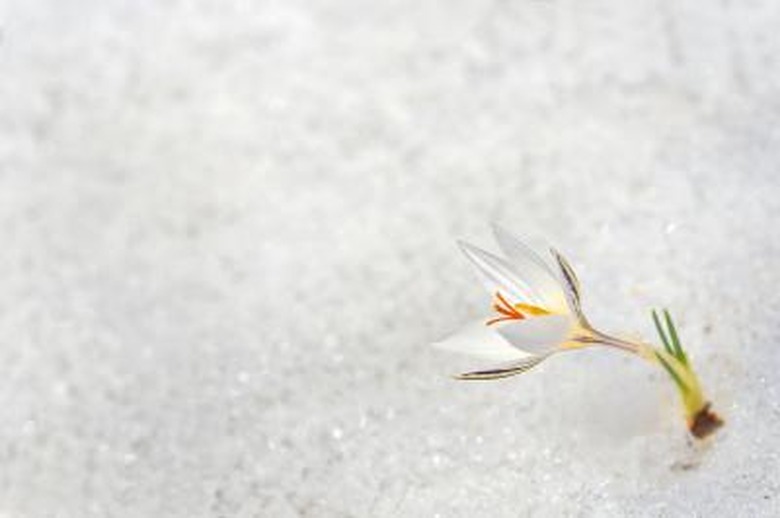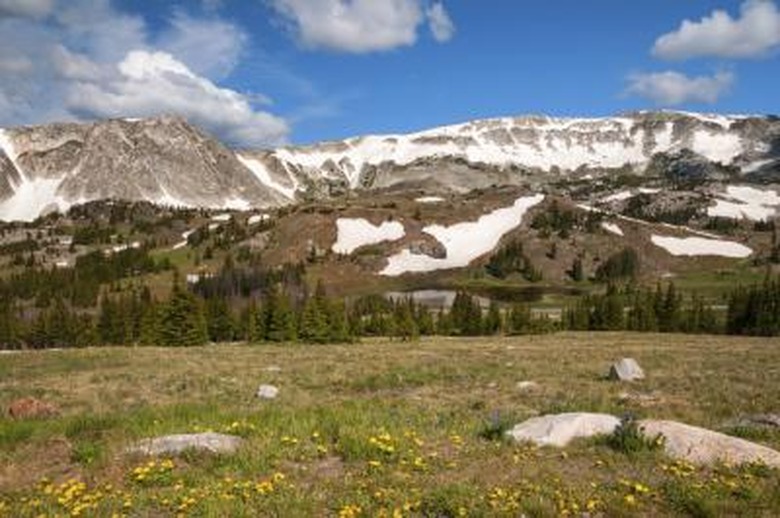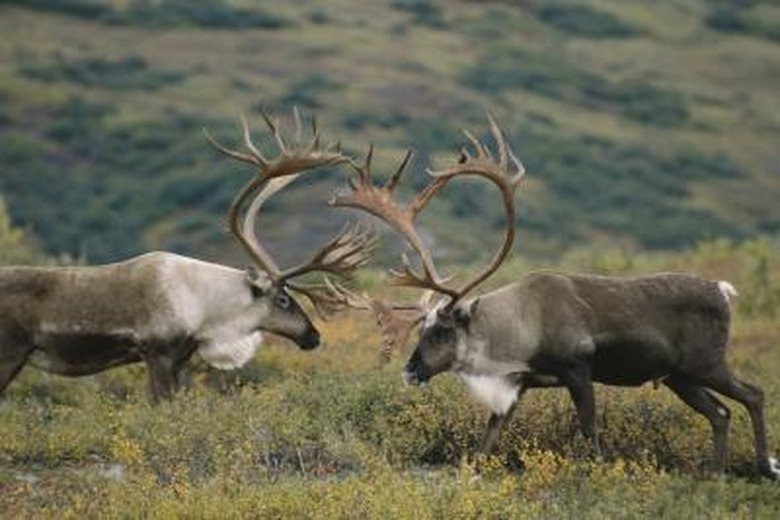Plant Adaptations In The Tundra
The tundra is a cold, harsh, dry ecosystem found in the Arctic, where it is known as Arctic tundra, and on mountain tops, where it is alpine tundra. Snow-covered for all but a few months, tundras experience harsh winds, even in summer. Soil is scant, and plants growing in the tundra cling to life with a series of important adaptations including size, hairy stems and ability to grow and flower quickly in short summers. Some plants grow with very little or no soil. Barren in the winter, the tundra in summer is awash with tiny alpine flowers that bloom in abundance; the landscape is green and lush with moss, lichens, sedges, grasses and dwarf shrubs.
Small and Close Together
Small and Close Together
Tundra plants are small — usually less than a foot high — for four reasons. The soil lacks the nutrients of richer soils in other ecosystems that are filled with organic material. The plants' short statures help them absorb heat from the dark soil, which helps keep them from freezing. Smaller plants are more protected from cold and winds. Roots also are short and grow sideways, as they cannot penetrate the permafrost. These plants tend to grow in clumps; clumping offers protection from the cold and from wind-driven particles of ice and snow. Examples of small tundra plants include Arctic crocus, lousewort, heather and cress.
Hairy Stems and Small Leaves
Hairy Stems and Small Leaves
The hairs on the stems of many tundra plants, such as the Arctic crocus, help to trap heat near the plant and act as protection from the wind. Plants adapted to the tundra have small waxy leaves to prevent the loss of precious water in this dry environment.
Quick-Developing, Cup-Shaped Flowers
Quick-Developing, Cup-Shaped Flowers
Plants such as the Arctic poppy have cup-shaped flowers that move with the sun. The cup allows more sunlight to focus on the middle of the flower; this warmth helps it to grow more quickly. Tundra plants can grow and flower at lower temperatures than any other plants on earth. They flower early in the summer to allow them to mature and put out seeds in the shortened growing season. According to the National Geographic website, the summer growing season is only 50 to 60 days, although the sun shines day and night.
Soil Not Needed for Growth
Soil Not Needed for Growth
Lichens, which are made up to fungi and algae, grow on rocks. Many tundra animals, such as caribou, rely on lichens to survive; they dig through the layers of snow to eat lichens in winter. Mosses can grow on rocks or in very shallow soils. Many species have the ability to dry out and still grow back several years later, when more moisture may be available. Mosses can continue photosynthesis and growth in colder temperatures than the flowering plants of the tundra.
References
Cite This Article
MLA
Davidson, Elaine. "Plant Adaptations In The Tundra" sciencing.com, https://www.sciencing.com/plant-adaptations-tundra-8042887/. 19 April 2018.
APA
Davidson, Elaine. (2018, April 19). Plant Adaptations In The Tundra. sciencing.com. Retrieved from https://www.sciencing.com/plant-adaptations-tundra-8042887/
Chicago
Davidson, Elaine. Plant Adaptations In The Tundra last modified March 24, 2022. https://www.sciencing.com/plant-adaptations-tundra-8042887/
